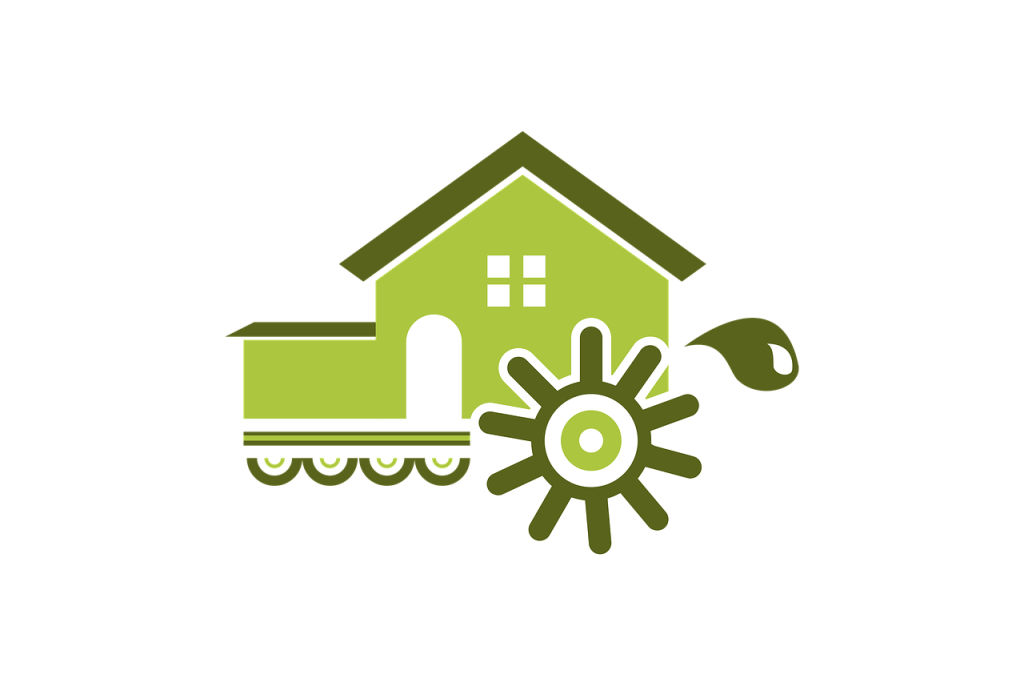Designing an environmentally-friendly home is all about making thoughtful choices that benefit both you and the planet. You’ll discover ways to incorporate sustainable materials, embrace energy efficiency, and reduce waste. This guide will walk you through practical tips and innovative ideas, from installing solar panels to choosing eco-friendly appliances. Together, we can create a home that’s not only cozy and beautiful but also kind to the Earth. Have you ever thought about the ways you can reduce your carbon footprint by designing an environmentally-friendly home? It’s a fascinating topic that combines smart design with sustainable living, and the benefits are as rewarding as they are numerous.
How Can I Design An Environmentally-Friendly Home?
Creating a home that is kind to the environment is a great way to contribute to a healthier planet, and it also has perks for you personally. Sustainable living can mean lower utility bills, better indoor air quality, and a more comfortable living environment. Here’s how you can start this eco-friendly journey.
Choose Sustainable Materials
When building or renovating your home, the materials you use can make a significant difference. Opt for materials that are sustainably sourced, have a long lifespan, and are recyclable or biodegradable.
Types of Sustainable Materials
| Material | Description | Benefits |
|---|---|---|
| Bamboo | A fast-growing, renewable resource | Durable, versatile, and aesthetically pleasing |
| Recycled metal | Metal that’s been reprocessed for reuse | Energy-efficient production, high durability |
| Recycled wood | Wood sourced from old buildings and furniture | Reduces deforestation, maintains durability |
| Cork | Harvested from the bark of oak trees without damaging them | Renewable, great for insulation and sound-proofing |
| Sheep’s wool | Natural fiber from sheep | Excellent insulation, biodegradable |
Maximize Energy Efficiency
Energy efficiency is a critical component of an environmentally-friendly home. Reducing energy consumption not only helps the planet but also saves you money on your energy bills.
Install Energy-Efficient Appliances
Modern appliances consume significantly less energy than older models. Look for products with the Energy Star label, which signifies that they meet or exceed energy-efficient guidelines.
Use Solar Panels
Harnessing the sun’s power is one of the most effective ways to reduce your home’s energy use. Solar panels can provide a significant portion of your electrical needs. While the initial cost can be high, the long-term savings and environmental benefits are substantial.
Optimize Insulation and Windows
Proper insulation and high-quality windows can dramatically improve your home’s energy efficiency by maintaining a consistent indoor temperature.
Types of Insulation
| Material | Description | Benefits |
|---|---|---|
| Fiberglass | Made from glass fibers | Affordable, easy to install |
| Cellulose | Made from recycled paper products | Excellent thermal performance, eco-friendly |
| Spray foam | Expands to fill spaces | Superior air sealing, high R-value |
Use Double- or Triple-Glazed Windows
These windows consist of two or three glass panes separated by air or gas-filled spaces, providing excellent insulation. They help reduce heat loss in the winter and keep your home cool in the summer.
Water Conservation
Water is a precious resource, and conserving it is crucial in an environmentally-friendly home.
Install Low-Flow Fixtures
Low-flow toilets, showerheads, and faucets use significantly less water than conventional fixtures without sacrificing performance.
Collect Rainwater
Set up a rainwater harvesting system to collect and store rainwater. This water can be used for landscaping, gardening, or even flushing toilets, reducing your dependence on municipal water supplies.
Utilize Natural Light
Maximizing natural daylight can reduce your need for artificial lighting, cutting down your energy use and creating a more pleasant living space.
Strategic Window Placement
Place windows strategically to take advantage of natural light throughout the day. Use skylights and light tubes to bring daylight into darker areas of your home.
Light-colored Interiors
Using light-colored paint and finishes can help reflect natural light, making rooms feel brighter and more spacious.
Indoor Air Quality
Creating a healthy indoor environment is an essential aspect of an eco-friendly home. Poor indoor air quality can affect your health and well-being.
Use Non-Toxic Paints and Finishes
Many conventional paints and finishes release volatile organic compounds (VOCs) into the air, which can be harmful. Choose products labeled as low-VOC or zero-VOC to improve indoor air quality.
Incorporate Indoor Plants
Plants naturally filter the air, removing toxins and releasing oxygen. Adding houseplants can enhance indoor air quality and add to your home’s aesthetic appeal.
Sustainable Landscaping
Your home’s exterior is just as important as the interior when it comes to sustainability.
Drought-Resistant Plants
Choose native, drought-resistant plants for your landscaping. These plants require less water and are better suited to your local climate, making them easier to maintain.
Organic Gardening
Grow your own vegetables, fruits, and herbs using organic gardening methods. This practice reduces your carbon footprint by minimizing the need for chemical fertilizers and pesticides.
Smart Home Technology
Incorporating smart technology can make your home more efficient and environmentally friendly.
Smart Thermostats
Smart thermostats learn your schedule and adjust the temperature accordingly, optimizing energy use and saving you money.
Automated Lighting Systems
These systems can be programmed to turn off lights when rooms are not in use or adapt the lighting based on the time of day.
Practical Tips for Getting Started
Transitioning to an environmentally-friendly home can seem overwhelming, but you can take it one step at a time. Here are some practical tips to get you started:
Conduct an Energy Audit
An energy audit can help identify areas where your home is losing energy. Many utility companies offer this service for free or at a low cost.
Make Small Changes First
Start with small, simple changes before tackling bigger projects. For example, switch to LED bulbs, unplug appliances when not in use, and set your thermostat a few degrees lower in winter and higher in summer.
Plan for the Long Term
Consider your long-term goals when making upgrades to your home. Investing in higher-quality, sustainable materials and technology can save you money and resources in the long run.

This image is property of pixabay.com.
Benefits of an Environmentally-Friendly Home
The rewards of designing an environmentally-friendly home go beyond just saving money; they extend to improving your quality of life and contributing to the preservation of our planet.
Financial Savings
While some eco-friendly upgrades require an initial investment, the long-term financial savings can be substantial. Lower utility bills and potential tax incentives make environmentally-friendly choices financially beneficial.
Healthier Living Environment
Reducing exposure to harmful chemicals and improving indoor air quality can have a positive impact on your health. A sustainable home promotes well-being for you and your family.
Enhanced Comfort
Better insulation, temperature control, and natural lighting can make your home more comfortable. An eco-friendly home is designed to optimize living conditions throughout the year.
Positive Environmental Impact
Every step you take towards a sustainable home contributes to the larger goal of reducing carbon footprints and mitigating climate change. It’s a chance to make a meaningful difference.
Increased Property Value
As awareness of environmental issues grows, homes with eco-friendly features are becoming more desirable. Green homes often have higher resale values and attract environmentally-conscious buyers.
Common Challenges and How to Overcome Them
Creating an environmentally-friendly home comes with its own set of challenges, but with some careful planning, you can overcome them and reap the benefits.
High Initial Costs
The upfront cost of sustainable materials and technologies can be higher compared to traditional options. To manage this, start with smaller, more affordable changes and gradually incorporate larger upgrades as your budget allows.
Limited Availability of Sustainable Materials
Depending on your location, finding sustainable materials might be challenging. Research suppliers beforehand and consider online options to access a broader range of materials.
Technological Learning Curve
Smart home technologies can have a learning curve. Take the time to familiarize yourself with user manuals, online tutorials, and support resources to make the most of these devices.
Permitting and Regulations
Building codes and regulations can sometimes complicate eco-friendly designs. Work with professionals who have experience in green building to navigate these requirements smoothly.

This image is property of pixabay.com.
Conclusion
Designing an environmentally-friendly home is an exciting and impactful endeavor. By choosing sustainable materials, maximizing energy efficiency, conserving water, utilizing natural light, and maintaining indoor air quality, you can create a home that’s not only kind to the planet but also beneficial to your health and wallet. Get started today, and enjoy the journey towards a greener, more sustainable future!




